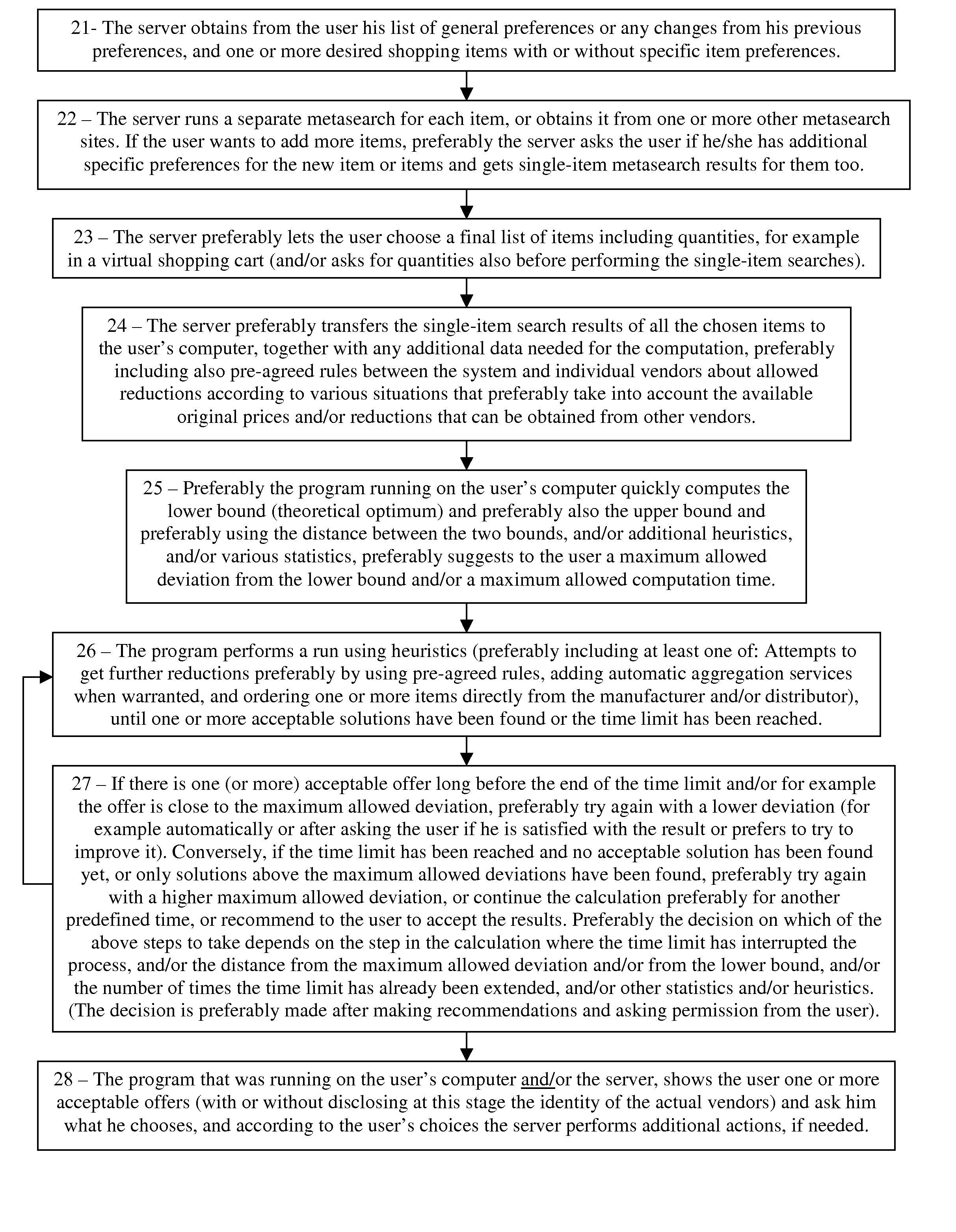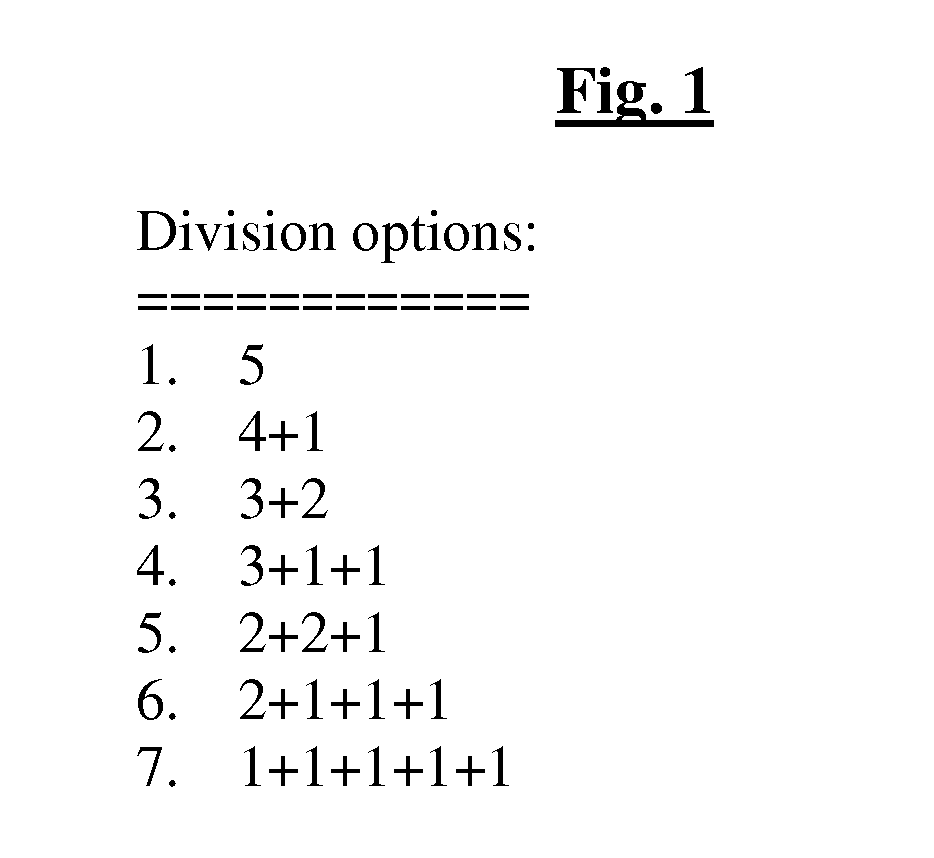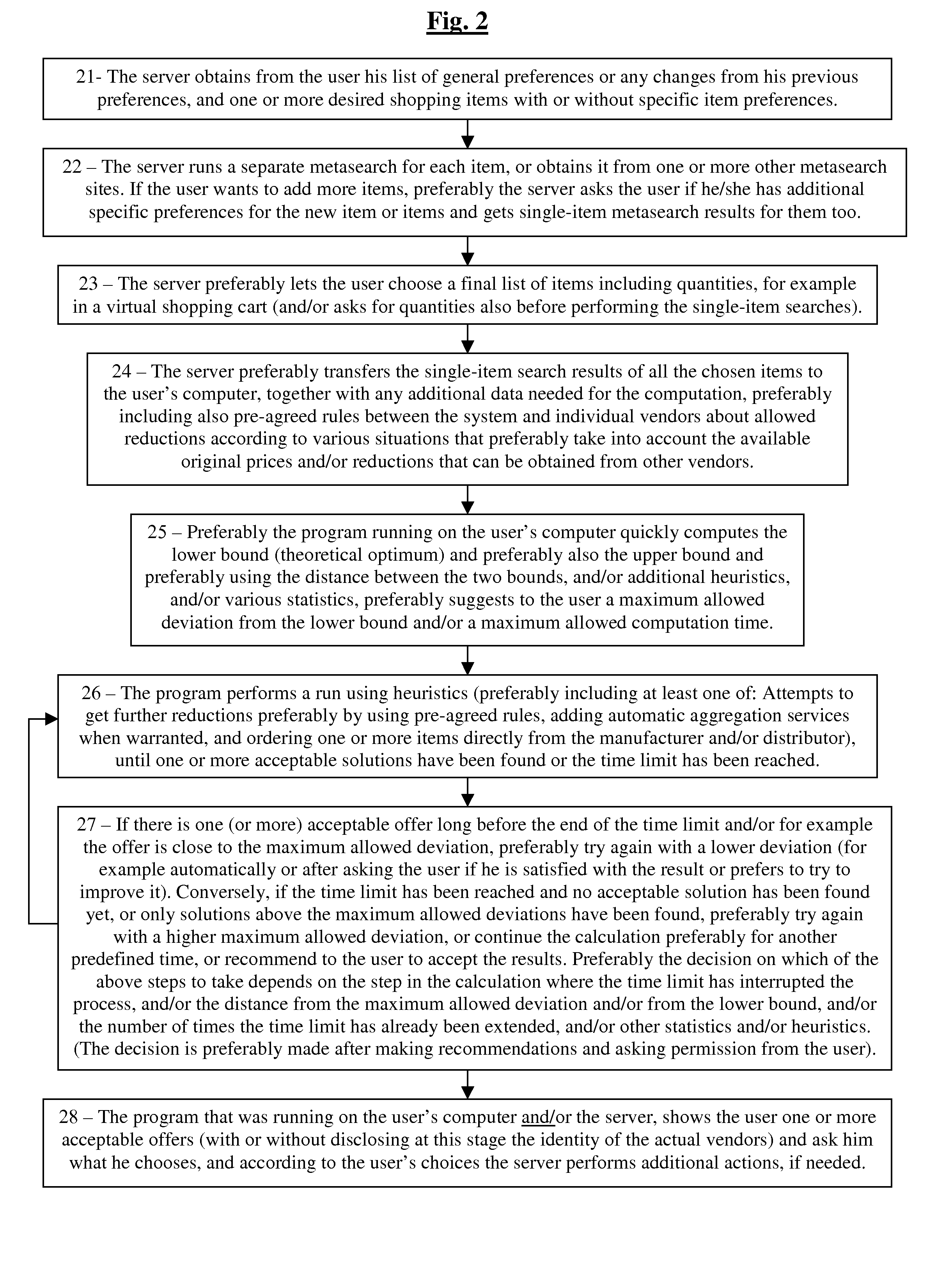System and method for automatic selection of a good buy in price-comparison sites when the user buys more than one product at the same time
a price comparison and shopping meta-search technology, applied in the direction of buying/selling/leasing transactions, electric digital data processing, instruments, etc., can solve the problems of not offering the user the possibility of integrating or combining products into a single, overloading the server, and sticking strictly to shops, etc., to save time and shipping costs, minimize shipping costs, and minimize the effect of pri
- Summary
- Abstract
- Description
- Claims
- Application Information
AI Technical Summary
Benefits of technology
Problems solved by technology
Method used
Image
Examples
Embodiment Construction
[0027]All of descriptions in this and other sections are intended to be illustrative examples and not limiting.
[0028]Referring to FIG. 1, I show an illustration of the level of complexity of finding an optimal solution unless smart heuristics are used for finding preferably near-optimal or acceptable solutions. For a convenient example, let us assume that there are only 100 known vendors which the site deals with and there are only 5 items which the user would like to buy at the same time, for example 5 books, or 5 computer parts. (Preferably such optimizations are used for items which are in the same category, in order to increase the chance of being able to obtain as many items as possible from a single source, since if the user wants to buy for example both books and computer parts at the same time, a reasonable user would look for the books in book shops and for the computer parts in computer shops and not try to mix the two orders together. However this could be more reasonable...
PUM
 Login to View More
Login to View More Abstract
Description
Claims
Application Information
 Login to View More
Login to View More - R&D
- Intellectual Property
- Life Sciences
- Materials
- Tech Scout
- Unparalleled Data Quality
- Higher Quality Content
- 60% Fewer Hallucinations
Browse by: Latest US Patents, China's latest patents, Technical Efficacy Thesaurus, Application Domain, Technology Topic, Popular Technical Reports.
© 2025 PatSnap. All rights reserved.Legal|Privacy policy|Modern Slavery Act Transparency Statement|Sitemap|About US| Contact US: help@patsnap.com



